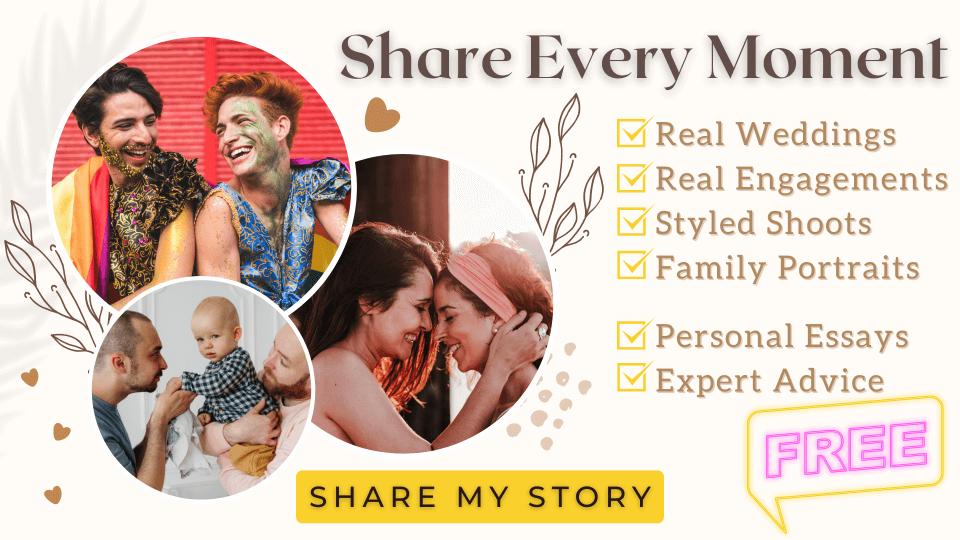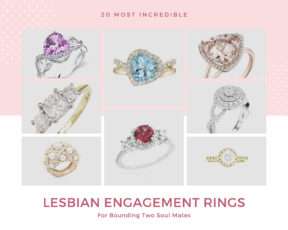Believe it or not, there are still suppliers who would rather not work for same sex couples and others who – despite viewing themselves as inclusive – have difficulty in working for same-sex couples without making assumptions.
How do you avoid assumption-making venues and suppliers?
This extract from wedding photographer Ross Willsher’s book How to Have a Wedding as Individual as You Are, sheds some light…
Listen to Their Language
We are all guilty of making assumptions about people from time to time, but as a wedding supplier, I feel it is important to take the time to get to know couples and ask lots of questions rather than to presume that particular aspects of their wedding will be dictated by their sexuality (or religion, age, or waistline etc).
Of course, the biggest assumption made is often in regards to one’s sexuality – whether due to appearance or personality traits.
Need help finding the perfect favours?
Explore our selection of wedding favours specialists for the most unique or custom handmade pieces.
Have questions? Ask anything, and our team of experts will be there to help you decide.
I never assume at a wedding fair that two women attending together are sisters, best friends or girlfriends, but I have overheard other professionals ask them where their finance is and why he isn’t at the fair.
It can be little assumptions like this that can be quite telling about what these suppliers may be like to work with on your wedding day.
When meeting wedding suppliers, listen carefully to the language that they use.
Ask a wedding favour expert
Are you representing a wedding venue?
Join us and place your listing here!
Phrases that begin with “I expect you will be…”, “I bet you are having…” or “I photographed a similar couple to you and they had…” are small signs that suppliers are making presumptions based on their preconceived ideas and beliefs.
This is particularly true if you hear these phrases when talking to potential suppliers for the first time.
I have had all of these phrases said to me in both my personal and professional life, and I know how frustrating it can be to feel that people have jumped to conclusions without taking the time to understand and get to know me first.
Yes, some gay couples do want to proudly incorporate the rainbow flag into their wedding theme or have a wedding reception to the sound of camp disco classics, many of us do not.
We are not all one and the same and it should not be presumed that we are! I actually viewed a blog recently that was all about gay wedding ideas and it was simply a list of items that incorporated the rainbow theme.
It really showed a lack of creativity or effort in understanding same-sex weddings.
Read Between the Marketing Lines
Also, take note of the language used by suppliers online and in print and have a close look at the images that they have used.
Does their marketing constantly only make reference to a bride and groom?
For example, many photographer packages include ‘Bridal prep to first dance’ coverage and often suppliers of light up love letters for the dance floor only have images of ‘Mr and Mrs’ on their website.
Whilst these suppliers may indeed by ‘gay-friendly’ (for want of a better term), it does show that they have not actively considered the needs of same-sex couples of demonstrated that they value the custom of gay clients.
I was once told that as a gay man, I would get lots of same-sex clients because I would be able to ‘speak their language’.
I politely informed the ignorant individual that we are not an alien race and that simple open-mindedness and as assumption-free consultation process is all that is needed to be a fantastic same-sex wedding supplier.
It’s surprising how many wedding industry experts still fail in this simple approach It is my experience of people, products and services often not catering to my sexuality that helps me to understand and meet the needs of gay couples, rather than an innate ability to speak a secret language!
Photographers’ Assumptions
One of the problems some straight photographers encounter when photographing gay couples is knowing how to direct and pose them.
Most photographers (myself included) were taught using straight couples as models and so when directing shoots, there is a predisposition to instruct couples to stand in gender-specific poses.
Photographing same-sex couples actually provides opportunities for photographs as both individuals are not restricted by the ‘traditional’ configurations.
A photographer who is at ease with photographing same-sex couples will make subtle changes to the language they use when posing you.
For example, “Now one of you kiss the other on their forehead”, rather than “Groom, give your bride a kiss on her forehead”.
Once again, it avoids assumptions – especially with regards to the idea that one of your is the more masculine or feminine in the relationship – a personal irritation of mine!
However, just because a photographer has not photographed a gay couple before, does not automatically mean that they are not the right photographer for you.
By taking a look at their portfolio, you will likely be able to identify whether their approach to photographing couples is varied and personalised to each couple, or whether they use the same generic poses for every shoot.
Whilst a consistent look in terms of style and composition is a positive sign of professionalism, placing every couple in the same position doesn’t show much thought for actively trying to reflect the individuality of the couples they are shooting.
Get Details
Ross Willsher is an experienced wedding photographer whose book How to Have a Wedding as Individual as You Are, is available to buy on Amazon. It covers everything from pinpointing your priorities to finding your photography style and seeking out your perfect suppliers Buy it now or find out more about Ross here.








